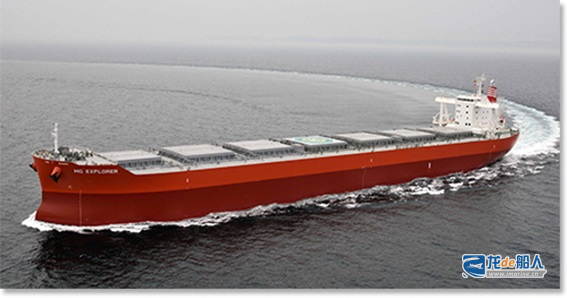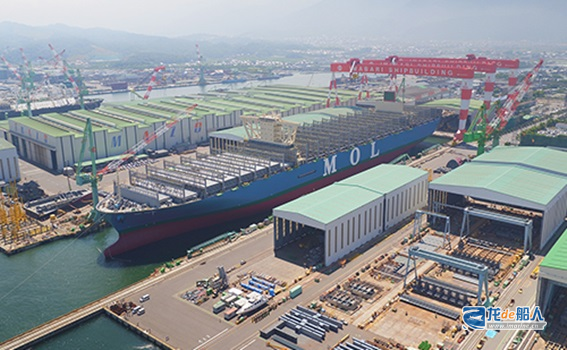Japan once accounted for over 60% of global shipbuilding and was known as the “Shipbuilding Kingdom.” Now, squeezed by the shipbuilding industries of China and South Korea, its former glory is long faded.
South Korean media analysis indicates that Japan’s prolonged slump in shipbuilding stems from deep-seated structural issues. Since losing its position as the world’s top shipbuilder in the 1990s, the industry has been persistently hampered by multiple factors, including excessive reliance on the domestic market, a narrowing range of vessel types, and repeated failures in overseas investments.

Over-reliance on domestic demand
Overreliance on the domestic market is a defining characteristic of Japan’s shipbuilding industry. This dependence manifests not only in its exclusive reliance on orders from domestic shipping companies, but also in the industry’s “conservative” corporate culture—a fixation on standardized designs and proprietary technical specifications that prevents timely responses to the demands of global shipowners.
In contrast, South Korea’s shipbuilding industry has successfully expanded its global order market by leveraging its flexibility in adjusting ship designs and delivery schedules.
Despite this, Japan remains competitive in specific vessel types such as bulk carriers, benefiting from stable orders centered around its three major shipping giants—NYK Line, Mitsui O.S.K. Lines (MOL), and Kawasaki Kisen Kaisha (K Line). Japan operates the world’s third-largest merchant fleet (behind Greece and China), and domestic demand alone sustains a significant volume of shipbuilding orders.
However, some people point out that this structured model fails to adapt to the increasingly segmented and customer-customized needs of overseas markets.
A representative from HD Hyundai Heavy Industries’ Tokyo branch said: “Japan’s overconfidence in its standardized designs has prevented it from flexibly meeting shipowners’ needs. It is precisely because of orders from major domestic shipping companies that Japan’s shipbuilding industry has not completely collapsed.”
Insufficient profitability raises questions about industry restructuring
The persistent decline in profitability represents another challenge facing Japan’s shipbuilding industry. Industry insiders note: “It is widely recognized within the sector that shipbuilding is vulnerable to economic cycles and cost fluctuations, making stable profitability difficult to achieve. Listed shipbuilders are continuously scaling back their shipbuilding operations under short-term performance pressures.”
For example, Japan’s Mitsubishi Heavy Industries has spun off its shipbuilding division into a subsidiary, and its share of the group’s total sales has also been steadily declining.
Beyond profitability concerns, the restructuring of Japan’s shipbuilding industry has also faced scrutiny. While the merger of Japan’s top two shipbuilding groups—Imabari Shipbuilding and Japan Marine United (JMU)—was viewed by the industry as a move to enhance global competitiveness through resource optimization, external observers widely believe it has limitations in expanding market share.
The reason lies in the fact that Japanese shipbuilding technology no longer possesses the distinct advantages it once did, and due to a lack of ship design diversity, it has been difficult to narrow the gap in market share with the shipbuilding industries of China and South Korea.
In order to revitalize the domestic shipbuilding industry, the Japan Shipbuilding Industry Association has proposed the goal of “restoring the global shipbuilding industry’s market share to at least 20% by 2030, doubling the current level.” The Japanese government is also preparing to invest 1 trillion yen to establish a “national shipyard” and other support policies.
Despite Japan’s ongoing efforts to revitalize its shipbuilding industry, it is widely believed that it will be difficult to restore its former glory.
Just as Japan’s proposed capacity doubling plan hasn’t garnered a positive response from the industry, one analyst stated, “Currently, global shipbuilding volume remains at 60-70 million CGT, and the ship replacement cycle generates an annual demand of approximately 30-40 million CGT. While Japan’s target is based on this replacement demand, it is extremely difficult to achieve given actual market competition. The industry generally views it as an idealistic goal.”
However, some observers note that although Japan’s market share in the global new shipbuilding market has significantly declined, it remains firmly among the top three globally. Therefore, it does not face the same crisis of industrial collapse as the U.S. shipbuilding sector and still holds development potential in areas such as designing new ship types to meet environmental regulations.

Lack of manpower and failure of overseas investment
Japan’s shipbuilding industry also faces a structural bottleneck: a labor shortage. While existing shipyard facilities and equipment can be repurposed, the shortage of skilled workers is a growing problem. “It’s difficult for the government to provide support to specific industries, and labor shortages remain a persistent problem for the shipbuilding industry as a whole,” he said.
Moreover, the experience of failed overseas investments has further entrenched the conservative stance within Japan’s shipbuilding industry. During the 2010s, successive setbacks faced by Mitsubishi Heavy Industries, Kawasaki Heavy Industries, and IHI in their investments in Brazil’s domestic shipbuilding sector led the entire Japanese shipbuilding industry to deeply recognize the “risks of overseas investment”.
Industry insiders explain this, saying, “Companies find it difficult to withstand shareholder opposition and the burden of liability, and are even less willing to pursue low-return overseas investments. This is also due to the industry’s experience of restructuring based on market logic during the large-scale restructuring of the 1980s. Precisely because of this, it’s difficult for the government to require individual companies to expand into overseas markets without an independent profit guarantee mechanism.”
However, Japan’s shipbuilding industry continues to pursue transformation, accelerating research and development of next-generation fuels such as ammonia and hydrogen. Japanese shipbuilders are also banding together to develop liquefied carbon dioxide carriers.
Overall, if Japan’s shipbuilding industry fails to break away from its domestically driven structure and develop a proactive strategy for shipbuilding diversification and overseas market expansion, its goal of narrowing the gap with China and South Korea will face significant challenges. Furthermore, industry insiders point out, “While Japan has managed to maintain its third-largest global position, returning to the top spot is a distant prospect; its ultimate goal is to maintain market share.”
According to Clarkson’s recently released newbuilding market data, global new ship orders from January to September this year totaled 32.64 million CGT (1,185 vessels). During this period, Chinese shipyards secured orders amounting to 18.33 million CGT (725 vessels), capturing a 56% market share to rank first. South Korean shipyards secured orders totaling 7.34 million CGT (169 vessels), capturing a 22% market share to rank second. The combined market share of the Chinese and South Korean shipbuilding industries stands at 78%.


